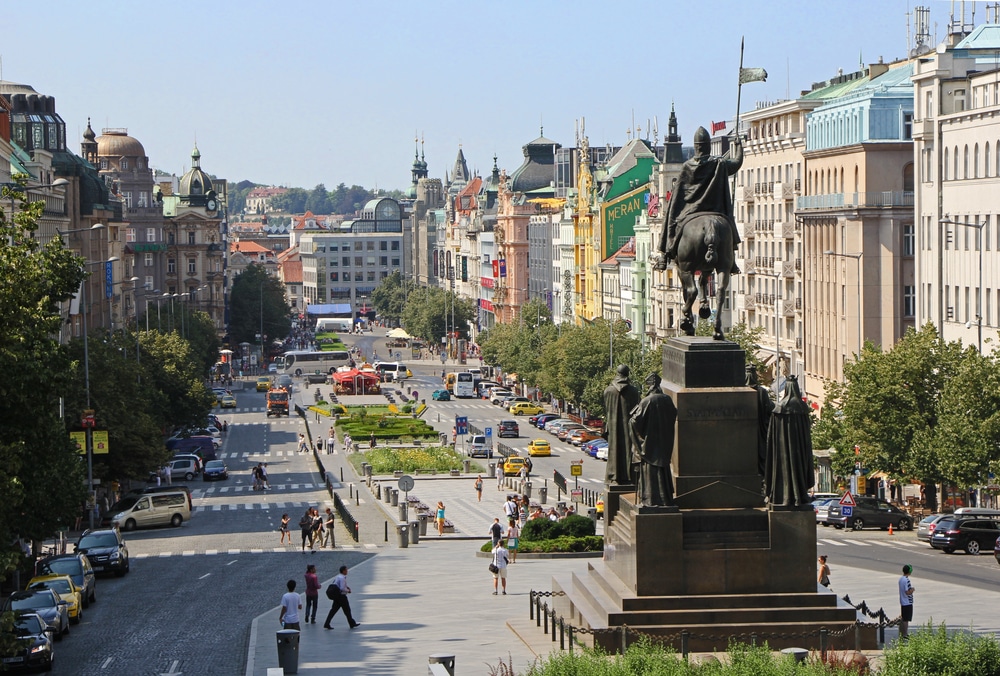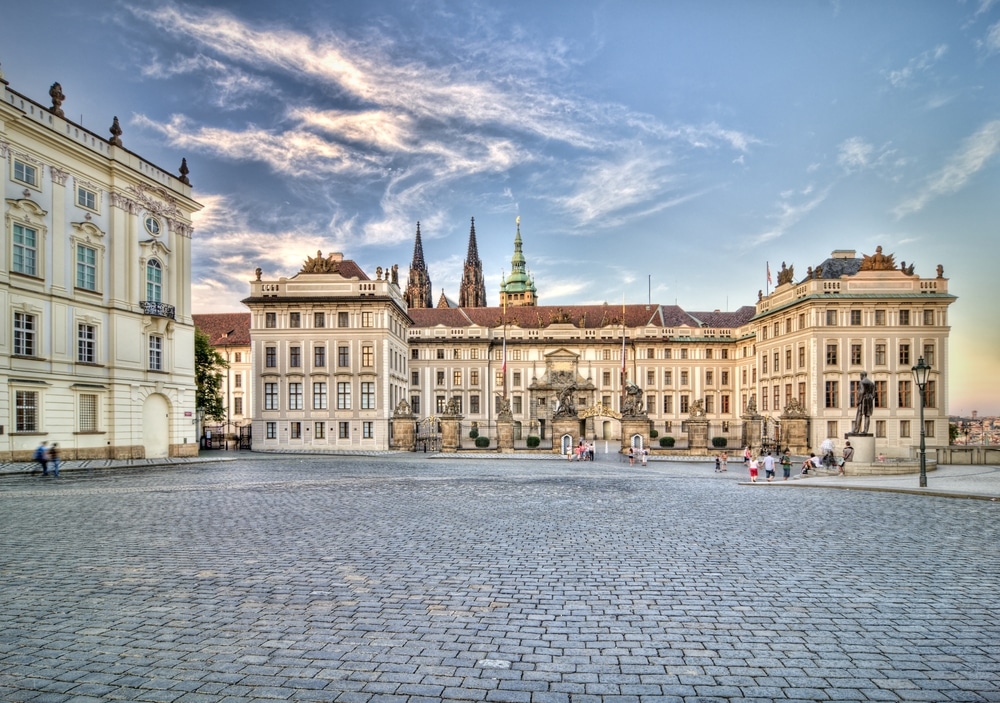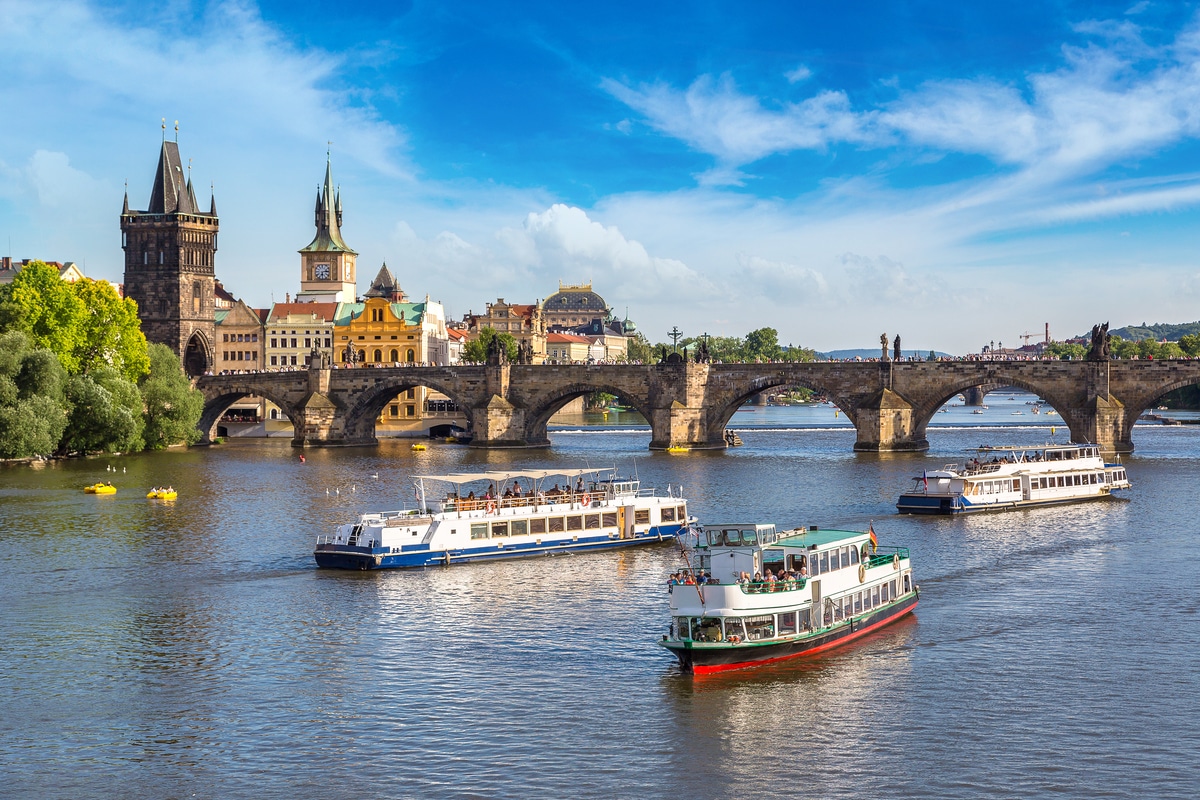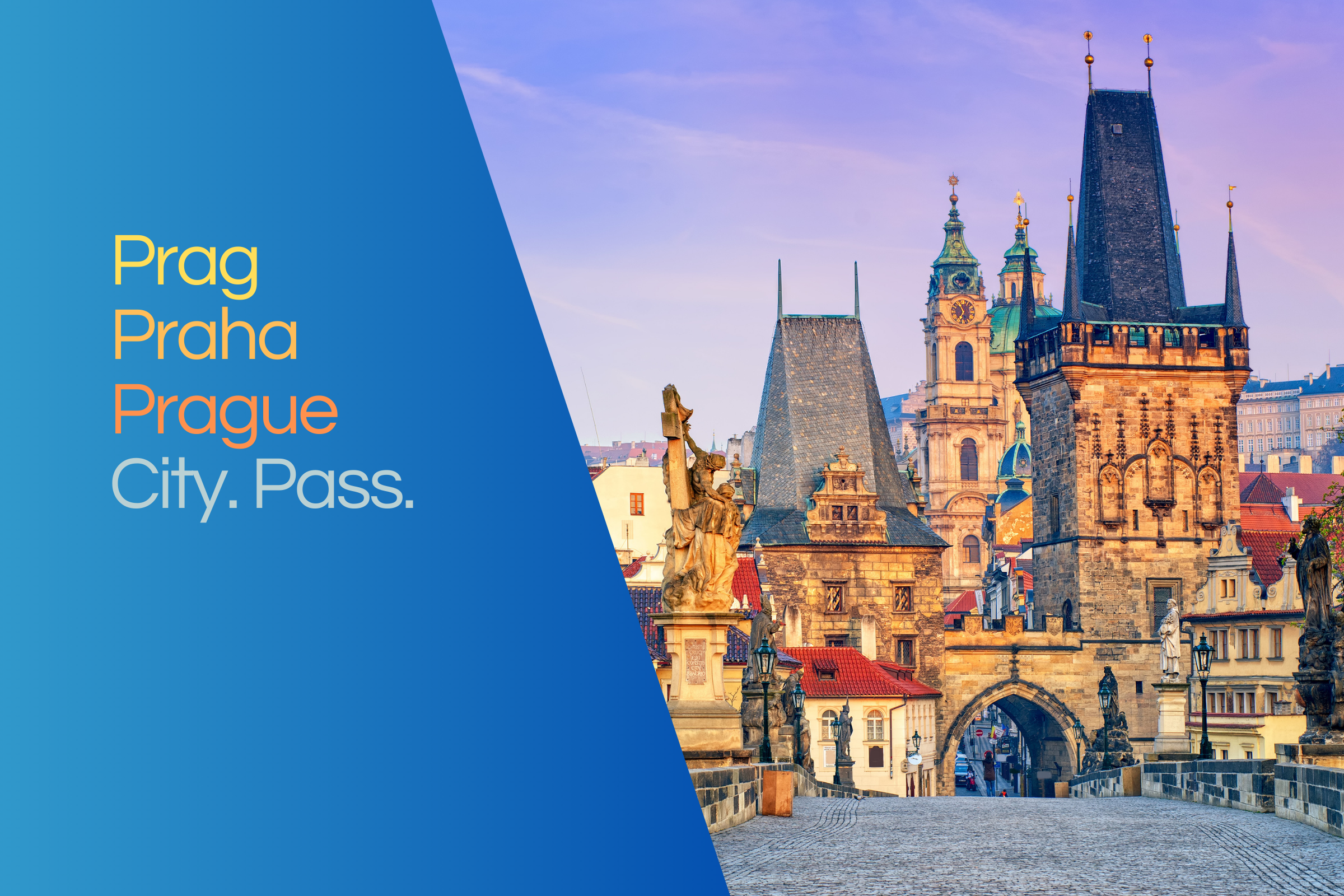- Home ›
- Czech Republic ›
- Prague
Wenceslas Square
With a length of 700 meters, Prague's Wenceslas Square seems more like a boulevard. But the square, which is one of the largest squares in Europe, was once laid out as a market square and looks back on a long and eventful history. Built in the Middle Ages, the square has been the scene of many important events throughout history. Today, the centrally located square is a popular meeting place and tourist attraction.

The origin and design of the square
With the founding of Prague's New Town in 1348, the present-day Wenceslas Square was laid out, which was initially used as the Horse Market. The square was practically the centre of the New Town, as it divided it into the Lower and Upper New Towns. In both the 17th and 18th centuries, the square, which was laid out under King Charles IV, was enlarged. In addition, a stone statue of St. Wenceslas was made at this time by the artist Johann Georg Bendl, which was to decorate the centre of the square from then on. It is assumed that the statue was removed in 1879 and placed on the grounds of Vyšehrad Castle.
A significant change to the square was brought about by the demolition of the old city walls in the 19th century. In the course of the removal of the city walls, the ditches were filled in and the square was significantly lengthened at its upper and lower ends. This also ensured that the square now resembles a boulevard, as the lengthening of the square included the planting of lime trees that flank the square. With the construction of the National Museum in the years 1885 to 1890, the square was given a structural finish at its upper end, which still characterises the overall appearance of Wenceslas Square today.
In the years between 1890 and 1930, the surroundings around Wenceslas Square changed significantly, as many of today's magnificent buildings were constructed at that time. In addition to impressive commercial buildings, beautifully designed residential houses were also built here, which still attract attention today.
Sights on and around the Wenceslas Square
The former stone monument to Wenceslas never found its way back to Wenceslas Square, but in 1920 Czech artist Josef V. Myslbak created a new equestrian statue of St. Wenceslas. Today, the statue, cast in bronze, adorns the square. It has become a landmark of Prague and is considered the most famous statue in the country. Wenceslas sits high on his horse as the first Christian martyr of Bohemia and other Bohemian saints surround the base of the monument.
Also eye-catching is the horticultural design of the square. In the middle of the square there is a historical tram, which reminds of the tram line that was running until 1980. Today the tram is used as a café.
However, the numerous architectural gems around Wenceslas Square are particularly worth seeing. Some of the older buildings still show Gothic and Baroque elements. However, the majority of the buildings are Art Nouveau, Constructivist and Neo-Renaissance.
On the other hand, the memorial to Jan Palach and Jan Zajic is thought-provoking. The memorial is located below the statue of Wenceslas. The student Jan Palach burned himself to death on the square in 1969 to protest against the invasion of the Warsaw Pact troops. A few weeks later Jan Zajic followed him and did the same.
There are also good shopping opportunities, cosy cafés and great restaurants around the square. Those who want to explore Prague can do so well from Wenceslas Square, as the Old Town is also just a few minutes' walk away.



